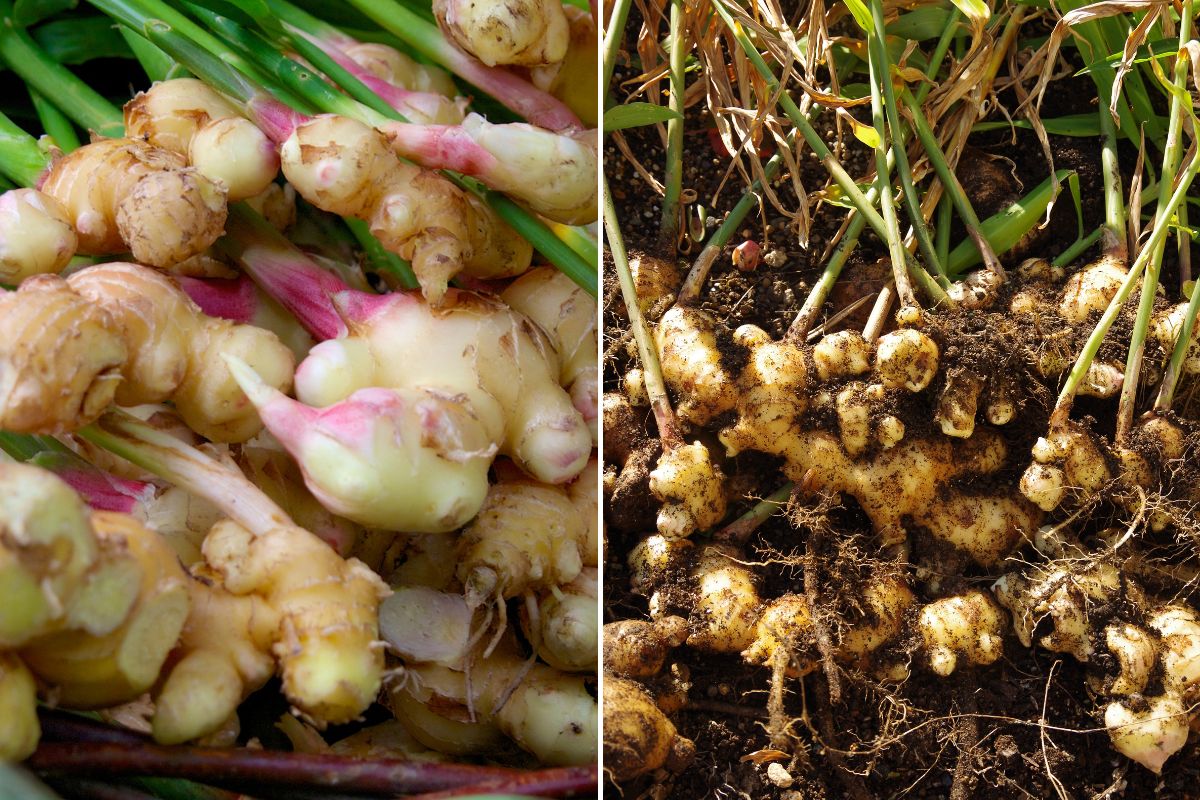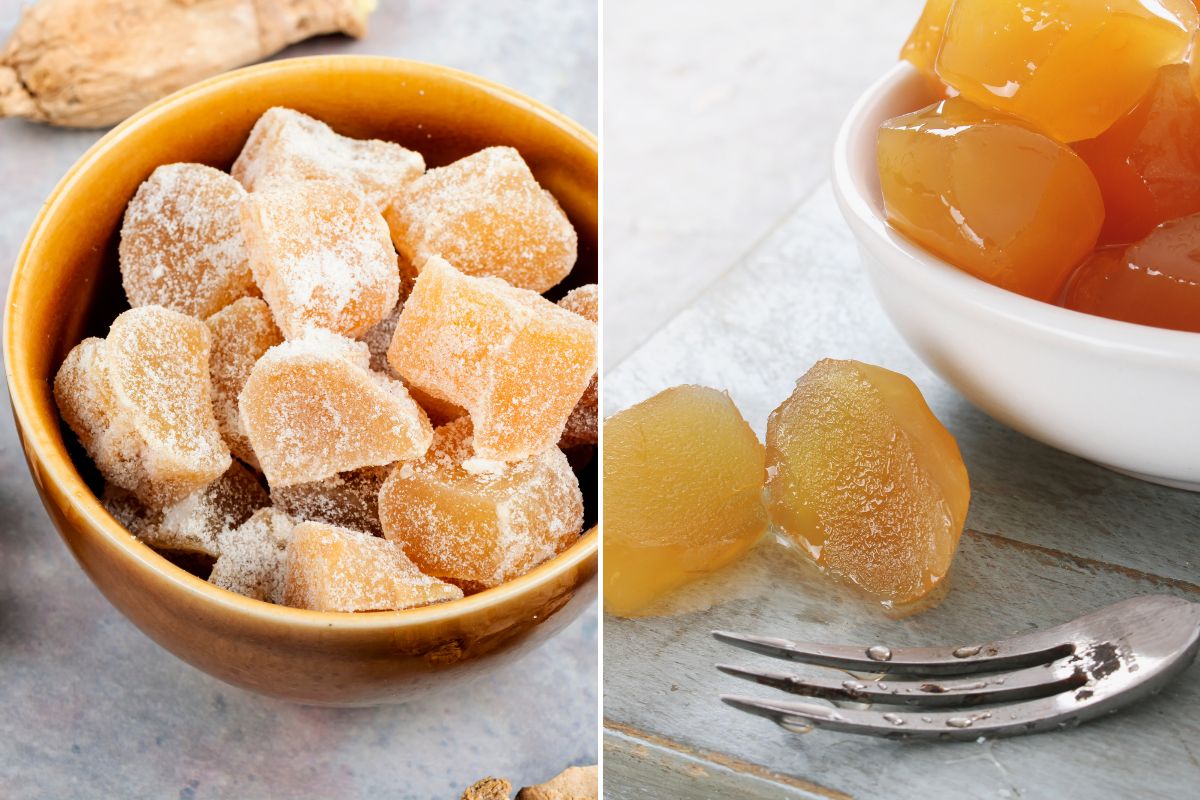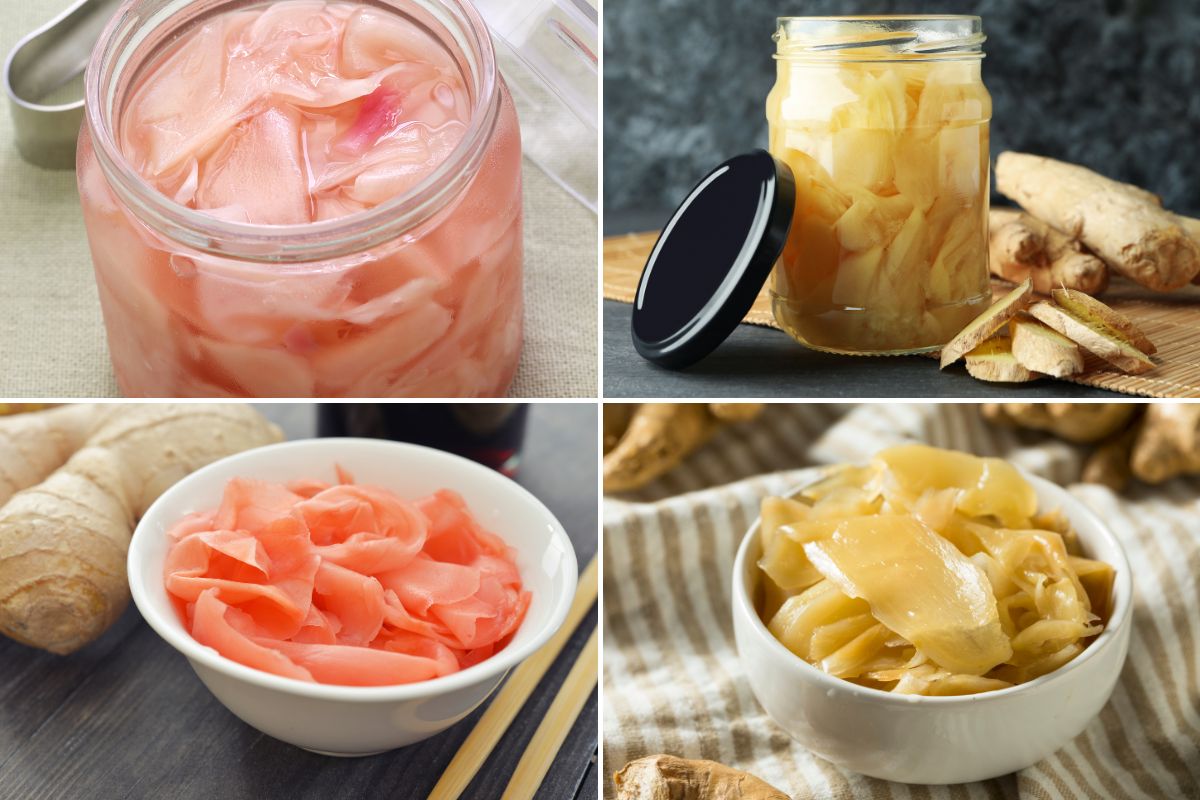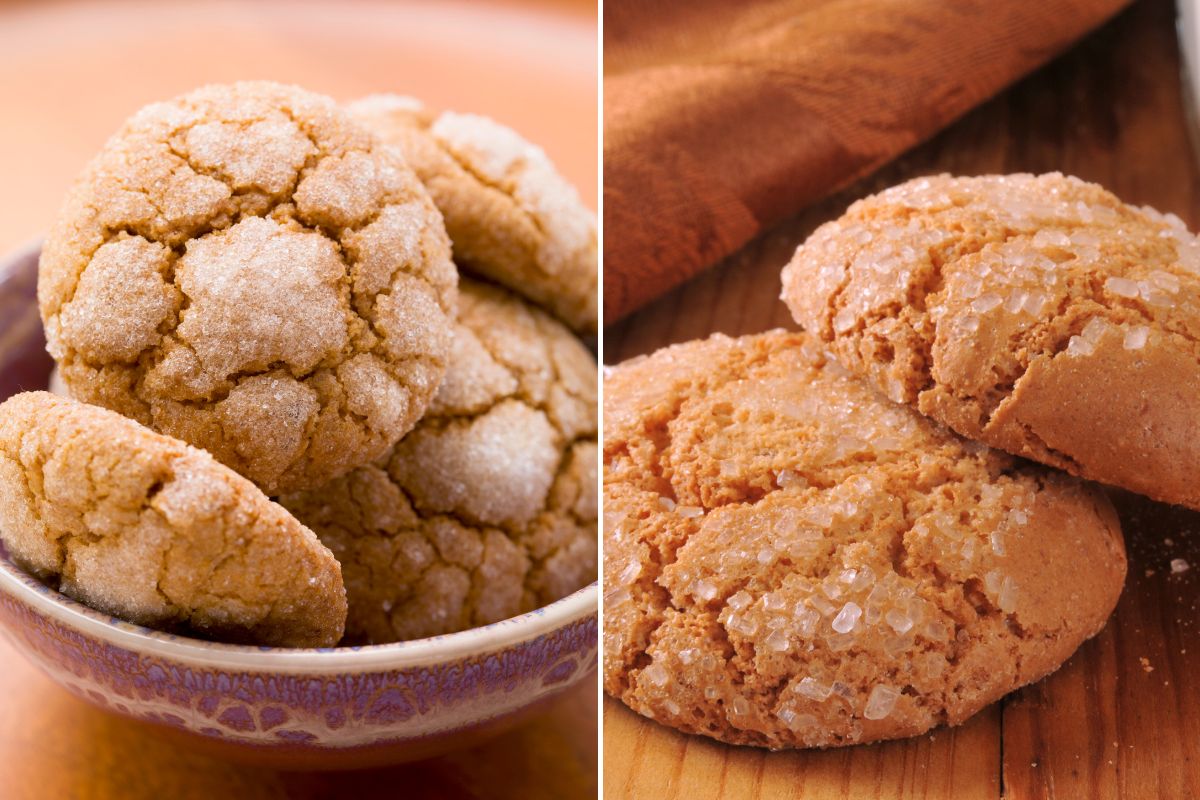The warm spicy flavour and distinctive aroma of ginger is familiar to many people, however, ginger rhizomes are curious looking things, and their knobbly shape and papery skin seems to put a lot of people off using it because it looks difficult to deal with.
Once you get to know how to choose, store or preserve, prepare and use a piece of root ginger, you'll discover that this isn't the case, and once you get the hang of a few simple techniques, your piece of ginger will no longer sit on the kitchen counter withering away because you're not sure what to do with it.
Ginger is used in both its fresh and dried form, and is an integral part of many cuisines around the world, from being a key component in spice blends for both sweet and savoury dishes, to adding heat and flavour to delicate Asian soups and stir fries. So, read on to become more familiar with ginger, and check out the recipes we've included for you at the end to get you started on your ginger journey.
Choosing or Selecting Ginger
When harvesting or buying fresh ginger for use, look for plump pieces that have a firm texture and avoid any that look shrunken or fibrous.
Depending on what you want to do with your ginger you may decide to use either the younger or older roots. Older ginger roots are woodier, and the flavour is stronger and hotter. Young ginger roots are more tender and have a lighter sweeter flavour that intensifies as they get older.
 Harvests of young ginger (left) and older ginger (right)
Harvests of young ginger (left) and older ginger (right)
Storing and Preserving Ginger
1. Short Term Storage
Fresh ginger can be stored at room temperature, or in an air-tight container in the fridge. Keep the piece unpeeled. When stored properly like this, fresh ginger will keep for over a month in the fridge.
2. Longer Term Storage
There are several ways in which ginger can be stored for longer periods of time, such as freezing, pickling, crystallising, or drying.
To freeze ginger, peel and store pieces whole in the freezer in sealed plastic bags. If the ginger has been organically grown, it is not necessary to peel it. Simply wash the surface well, pat it dry and allow air-dry thoroughly before freezing. You can also cut it into smaller usable pieces before freezing.
Another method is to clean the pieces well, or peel them, before coarsely chopping them and making a puree in a food processor. Place the pureed ginger into ice cube trays and freeze. Once frozen, remove the blocks and seal in a plastic bag until needed.
Ginger can be stored in the freezer for up to 6 months.
Pickled ginger is commonly used as a palate cleanser when eating sushi, but it can also be used as a topping for poke rice bowls and in salads to give a sweet ginger flavour. It also goes well in stir fries with beef or chicken.
Some pickled ginger may be pink and this can be due to the pickling process bringing out some of the natural pigment found in young ginger. In some commercially prepared ginger the ginger slices may be coloured pink with natural colourants, such as beet juice, to enhance its appearance.
Candied or crystallised ginger is made by simmering ginger slices or pieces in a sugar syrup, allowing them to cool, coating them in sugar crystals and allowing them to air dry before storing. Ginger prepared this way for longer term storage can be used in cakes and biscuits, added to granola or sprinkled over ice cream.
Ginger can also be dried and used as a spice to flavour a variety of dishes. Ground dried ginger may lose its flavour over time, so if you're planning on drying your home-grown ginger, grind what you need for a couple of months at a time and store the rest until you need more.
 Candied or crystallised ginger is one way of storing or preserving ginger
Candied or crystallised ginger is one way of storing or preserving ginger
Preparing Ginger for Use
1. Peeling and Washing
Peeling the knobbly rhizomes of ginger is not as arduous a task as you might think, and the skin can be removed using a sharp knife, a vegetable peeler or a teaspoon.
It might sound strange to use a teaspoon to peel a piece of ginger but it works surprisingly well and gets great results. You simply scrape the edge of the teaspoon over the surface of the ginger and the skin comes off quite easily. Note that with older pieces of ginger the skin may be a bit tougher, in which case a knife or vegetable peeler may be better for the job.
You also don't have to peel the skin before using ginger. It's best to use organically grown ginger if you don't want to peel it, and you should wash or scrub the surface very well to remove any traces of dirt or soil.
2. Slicing and Dicing
Ginger can be sliced into thin slivers using a sharp knife, vegetable peeler or mandolin (be sure to use the hand guard).
To cut fresh ginger into fine julienne strips, slice it thinly against the grain, then stack the slices like a deck of cards and slice again to create long strands. To mince ginger by hand, turn the julienned strips 45 degrees and chop finely.
3. Grating and Pureeing
Grate ginger using a fine grater or microplane. Frozen ginger pieces grate very easily, and don't need to be thawed before grating.
To puree ginger, peel and chop it into small pieces, then crush it using a mortar and pestle with a bit of salt until you get a smooth paste. You can also mash grated ginger with the back of a spoon to get a smoother consistency.
4. Drying
Ginger can be dried and then ground to a fine powder to be used as a spice. To do this, peel (optional) and thinly slice the ginger and place in a single layer on a wire rack. The pieces can be left to air dry naturally, or to speed up the process can be dried in a dehydrator or in a low oven. To dry ginger in the oven, place the racks of ginger slices in an oven at 100°C until completely dry and brittle. This may take 2-4 hours depending on the thickness of the slices. Store in an airtight container and grind in a spice or coffee grinder as needed.
 Peeling ginger with a teaspoon; slicing into julienne strips; grating; dried ginger and powder
Peeling ginger with a teaspoon; slicing into julienne strips; grating; dried ginger and powder
Using Ginger
Ginger, when dried and powdered, becomes a lot spicier, and more potent than fresh ginger. As a spice, it is used in both sweet and savoury dishes that range from gingerbread, biscuits, cookies and cakes, to stews and curries. It is an integral component of spice blends and masalas, and combines well with other warm spices like cardamom, nutmeg, and cinnamon which are often used to flavour sweet dishes.
Fresh ginger can be used in teas and other beverages, cooked into jams and preserves, sugar-coated and crystallised, or lightly pickled and used to clear the palate between bites of sushi. It is a key component in curry pastes and livens up stir fries.
Pickled Ginger
- 125g fresh ginger
- 1 tsp salt
- ¼ cup (60ml) rice wine vinegar
- ¼ cup (60ml) water
- ¼ cup (55g) caster sugar
Choose fresh young ginger and peel all the skin off. Using a vegetable peeler or mandolin, slice the ginger thinly. Place in a bowl, sprinkle with the salt and stir until well combined. Set aside for 30 minutes to allow the salt to extract excess liquid, then squeeze any excess liquid from the ginger slices, before placing the ginger into a sterilised jar.
Place the rice wine vinegar, water and sugar in a small saucepan and stir over medium heat until the sugar dissolves. Increase the heat and bring to the boil. Pour the hot vinegar mixture over the ginger. Set aside for 5 minutes to cool slightly before sealing the jar. Place in the fridge for 24 hours before using to allow the flavour to develop. Store pickled ginger in the fridge for up to 1 month.
 Young ginger can be pink when pickled
Young ginger can be pink when pickled
Ginger Biscuits
- 110g butter
- 110g golden syrup
- 110g caster sugar
- 225g self raising flour
- 3 tsp ground ginger
- Granulated sugar (for decoration)
Preheat the oven to 180°C.
Sift the flour and ginger together in a bowl.
Melt the butter, golden syrup and caster sugar in a saucepan over medium heat until the sugar has dissolved.
Add the butter mixture to the dry ingredients and mix thoroughly.
Roll the dough into small balls. Dip one side into the granulated sugar and place on a baking sheet. The balls can also be flattened slightly with a fork.
Bake for 10-12 minutes. If you want a crisper biscuit, bake for 15 minutes.
Place biscuits on a rack to cool. Note that they will be soft when they come out of the oven but will crisp up once they are cool.
 Ginger biscuits are delicious with a cup of tea or coffee
Ginger biscuits are delicious with a cup of tea or coffee





